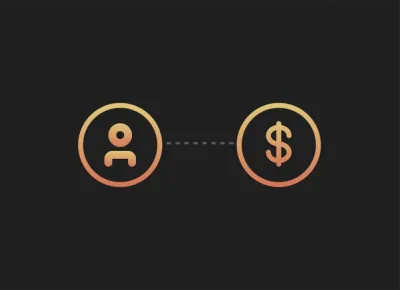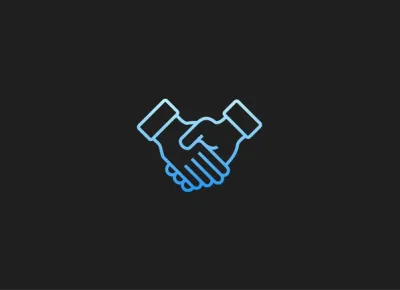Blog
Hiring & Talent
Resources to help improve your recruiting, hiring, and talent management.
All
Fundraising Metrics and data Product Updates Operations Hiring & Talent Reporting Customer Stories

founders
Hiring & Talent
Why You’re Doing SDR Onboarding Wrong (Part 1)
A guide to avoid the common mistakes and capitalize on opportunities with your new reps written by Brock Benefiel. Brock is a Digital Marketing Consultant, Tech Writer, and Author of the upcoming book Flyover Startups.
Because they are often the least experienced group working in a tech company (or working at all), SDRs are some of the hardest employees to train. And in the short-term, they are some of the least valuable employees to train and will only be a cost burden on your company in the early days.
“The average new sales rep at a SaaS company takes 5.3 months to reach full productivity,” Steli Efti writes. “That’s almost half a year where your business is actually losing money per rep.”
Yikes, right? But unless you’re entirely new to sales development, you know SDRs work as a long-term investment if given the right environment and proper management. If you can afford the necessary months to pass before they become meeting-setting machines, you’ll eventually develop a crop of SDRs that kickstart huge deals and fill a much-needed talent pipeline that your company will rely on for future hires.
So will the amount of onboarding and ongoing training still seem inefficient and sometimes a waste? Absolutely. But it will also pay off big in the end. Its importance is critical. Remember, it’ll always be more costly to have high SDRs churn rates than it will be to allow time for SDRs to train. If you train well, you’ll have set the SDR on the right track and develop a knowledge base that can be returned to the next crop of reps and lessen the burden on your executive team to train in the future. Proper onboarding will reduce the time to full productivity. It’s the best way to do it.
But too often onboarding mistakes are made and training opportunities are squandered. Don’t fall victim to these silly slip ups. Examine these top errors founders make when bringing on new reps instead and learn how to avoid all of it with effective training strategies:
#1 – You push them too quickly into the deep end
This is the easiest mistake to make. You want to get your SDRs calling and emailing quickly so they get professional experience but there is just so much they need to know before they can effectively prospect.
Here is just a sample of what they need from you in order to better understand your customer:
Customer profiles – Who are you selling to in your total addressable market (TAM)? How do these companies specifically benefit from your product offering?
Customer personas – Who are your SDRs going to reach out to? What is their job title and responsibility and how does this product specifically make their life easier and solve a big issue they face?
Influencer profiles – Who else is important at the company? Who are the additional stakeholders they should consider and what might their role be in the buying process?
Here is just a sample of what they need from you in order to better understand your company:
Team structure – How is sales broken down? Are SDRs reporting to marketing or sales? Who will they need to report to and who else will they work with?
Sales strategy – Are you inside or outside sales company? Are accounts owned by geography or by individual companies?
Key metrics – What are the KPIs SDRs will have to hit?
Then, you’ll want them to understand the market as well. Be able to answer these questions:
Who are your competitors?
How is their product offering different?
What should be their answer when a prospect asks “why should we pick you over X company?”
After that, you will want to demo your product to each SDR and allow them to use it. You also want your new hires to sit down with an individual from each department – engineers, product managers, marketers, salespeople, etc. – to understand the role each play in the company, how everyone plays a role in software development and sales and how each find individual value in your product offering. These conversations provide a deeper understanding of how the product works, why its valued and creates a forum for SDRs to have their first long-form discussions about the company and make them feel more comfortable once they must have these conversations with prospects. Let them first understand what it’s like to be sold and allow them to experience the product education. Have them mark the questions they have in the process so they know to anticipate the same inquiries when they’re the ones who are explaining the product.
If you’re not at least providing them this baseline understanding of your company, their customers and their role, you can’t expect them to set meetings. Push them in without this initial training and they will inevitably sink.
#2 – You’re going to give them too much information
No matter how good you are at training employees, you are bound to overload your new SDR hires with information. Expect them to retain just a fraction of what they’re initially taught. Instead of hoping they’ll be able to consume the firehose of information, rely on ongoing training to make up for what they’ll inevitably miss. “Create a training manual that’s part sales script, part objection management document,” Steli Efti writes. “Your sales training manual allows you to build a more scalable strategy for onboarding new sales hires, by getting everyone to speak the same language from day one.”
There is also only so much information you want SDRs to learn before they actually deal with customers and experience the real nuances of the role. In the ramp up period to full efficiency, you want a back and forth to occur between the ongoing education SDRs need and the real life experience they require to get a feel for the customer communication.
Your reference materials will SDRs something to study when they encounter more specific obstacles with potential customers. According to Efti, here are some aspects you want to include:
10-15 customer FAQs
10-15 common objections
Short answers to each question or objection
Your SDRs should study the questions and answers. You should test them on it. Find out what concepts are more difficult to comprehend and go over it again. The more repetition in answering the same questions the shorter the response time will be. The faster the response time the more natural a rep will seem on the phone. The more natural they feel the more they will listen and begin to discover how to address the unique concerns of a customer and set meetings.
If instead you overload them with lectures and manuals that don’t allow them actual practice, you will paralyze your SDRs once they’re tested. Use these proper strategies and you will actually provide experience.
#3 – You don’t put the same amount of resources into onboarding that you do hiring
It’s easy to pay lip service to the importance of onboarding, make an onboarding hire and assume it will work as an isolated activity as part of the new employee process. Check yourself instead: are you devoting the same amount of employees, time and money toward onboarding as you are hiring? Is training and developing talent as crucial as identifying it and reeling it in? It needs to be.
Think of it this way: you wouldn’t devote all your resources to SDRs and AEs to find good clients only to underdeliver on customer success and watch an unnecessary and expensive client churn. You wouldn’t avoid upselling a client that needs a better offering, so why would you stop from developing a mid-level performer into achieving more? If you find yourself instead with a balance of how SDR talent is acquired and developed, you’ll earn greater retention and see faster results.
Other articles Brock has written about SDRs:
Why SDRs fail
How to set up a system for SDR success
The importance of SDRs

founders
Hiring & Talent
Operations
CEO Weekly Note Update Template
CEO Friday Note
Successful companies come in different shapes and sizes yet they often share a few key traits. One of which being regular and open communication. Dig into any great leaders, past and present, and you’ll notice most (if not all) have created some type of management system that allows for open and regular communication. Whether it be Marc Benioff’s V2MOM, Scott Dorsey’s “Friday Note”, or Kyle Porter’s Weekend Update communication can also come in different shapes and sizes.
As ExactTarget scaled from a small startup to hundreds and thousands of employees it was no longer feasible for Scott Dorsey to stay in touch with everyone. His answer? The Friday Note. In an interview with Chip House of Structural, Scott Dorsey had this to say: “I started officially sending out my ‘Friday Note’ in 2009 and never missed a weekly email for over five and a half years. It was a simple and very impactful way to highlight accomplishments for the week and keep the lines of communication open with our 2,000+ employees. It showcased the transparency in the company and helped us keep our unique ‘Orange’ culture as we scaled the company — one of the defining factors to our overall success at ExactTarget.”
Weekly team Updates are a quick way to share your company vision, rally around goals, and stay aligned as the team continues to grow. On the flip side, weekly Updates tend to help CEOs and leaders stay on top of the business. As Kyle Porter puts it, “Personally, writing this email helps me better understand the state of the business. It also helps everyone else stay in the loop so they can help out where needed and not lose track of our direction.”
We’ve pieced together an Update Template from different methods and styles used by leaders like Marc Benioff, Scott Dorsey, and Kyle Porter. Once you’ve dialed in your style and format you should be able to crank out a weekly Update to your team in 30 minutes or less!

founders
Hiring & Talent
Metrics and data
An Update Template for Sharing Your HubSpot Funnel Metrics
What campaigns are working? What content is performing best? Where can we improve inefficiencies? Where should we double down? Continuing to review, analyze, and “duct-tape” your funnel is key to executing an agile marketing playbook.
“Data doesn’t do you any good unless you act on it. Each of these metrics clearly tells you how you’re doing. Right away, you’ll know where you need to spend your time.” – Andrew Chen, a16z
General Funnel Metrics
Automatically bring in general funnel metrics using our HubSpot integration. Bring in basic lead counts or use filters to bring in granular funnel metrics to dig into where you can improve the most. You can check out examples for bringing in different pipeline stages below:
Different Lead Stages; subscribers, MQLs, SQLs, PQLs, etc. – Start with “Contacts” as your HubSpot Object. Anchor the date to any field you or HubSpot are automatically tracking; create date, became an XYZ date, etc. From here, you can filter your different contacts however you’d like. For this example, we our simply using our “Lifecycle Stage” but can easily break that down by different sources, personas, sales reps, etc.
Note: Use the value field to tie a monetary value to your metrics. For example, using “Deal Amount” to bring in the value of all of the contacts in a certain stage. From here, you can use formulas to calculate the weighted value of different pipeline stages.
New Customers – Start by connecting the object where you are tracking new customers and their value; likely companies or deals. Just as you would for lead stages, you’ll want to anchor the object to the field that denotes a new customer; lifecycle stage, etc. Use the value field to bring in a simple count or the total dollar amount for won deals. Easily take a look at the row level data to see where customers are coming from, renewal dates, and more.
Top of Funnel: Lead Source Breakdown
Marketing attribution is tough. Staying on top of your lead sources and continuing to tweak and improve inefficiencies is a quick way to keep your growth metrics moving in the right direction. Keep tabs on where your leads are coming from by filtering different leads by their lead source.Use “Filters” when connecting HubSpot to Visible to break down new leads by different sources, campaigns, and events. Drill down using row level data to see what specific leads are coming from what sources.
You can check out an Update example for sharing your funnel metrics and lead sources here.

founders
Hiring & Talent
Operations
Metrics and data
Operations
Startups: Why Send Management Reports?
Successful companies share a few key traits… so do unsuccessful ones. Investors, executives, team members, potential hires, etc. understand this. Regular management reports show the CEO/CFO/etc. are key in keeping business decisions agile while showing you value what your management team brings to the table.
How Can You Get Started with Successful Management Reports?
It’s a lot easier than you might think. Good management reports don’t have to be long and they don’t have to be time consuming. If you’ve already got metrics, KPIs, etc. in place with your teams it is a matter of extracting the key data and turning it into something easily replicable, actionable, and digestible. Sharing financials, metrics, and dashboards can certainly be useful to managers but suffocating at the same time.
Bringing clarity and simplicity to management reporting is a strong start to avoid “the activity trap” and keep managers, teams, and individuals focused on their original purpose. It is easy for team members to get lost in their day to day and ultimately forget why they joined your company to grow the company and themselves. In working with countless CEOs, CFOs, and managers, we have a few things to keep in mind while building your management reporting and data distribution system:
Replicable – Keep metrics and objectives comparable from report to report. Chances are you’ve got an objective in place so be sure to highlight that in every report to keep focus where it matters most.
Actionable – Be sure that the report leaves room for questions, discussions, and a game plan until your next meeting, report, etc.
Digestible – Make the report light and to the point. Be sure to include only the 2-6 most vital metrics as full dashboards and spreadsheets can become suffocating and distract from your manager’s main objectives.
An Example Management Report
You can check out an example of a Visible Management Report Here.
As always, feel free to sign-up for a free trial here and email support@visible.vc if you’d like the template dropped into your account.

founders
Hiring & Talent
What Does a Bad Sales Hire Really Cost Your Startup?
How to Avoid a Bad Sales Hire
It’s a dilemma for any company: your growing startup begins to face increasingly aggressive quarterly goals and the pressure is on to scale your sales team to meet the growing needs. Why is growth a challenge? It increases your chances of making the wrong hire.
According to Mindflash, 38 percent of all bad hires come from companies looking to fill a position quickly. Another 21 percent blamed an inability to test or research the employee’s skills well enough while another 11 percent pinned the bad hire on the company’s failure to check out references. Each scenario screams out a company pulling the trigger too quickly to fill a spot. This can be an especially deadly concern when it comes to your sales team.
There’s no doubting that filling sales positions is hard. When surveying companies from 2006 to 2012 on the hardest jobs to fill, the ManpowerGroup consistently named sales as the annual winner for the toughest department.
For every company, it’s a large opportunity cost to miss out on the next great closer and land a dud instead. But for a cash-conscious growing business, a bad sales hire can be especially devastating. Many businesses have considered the costs of a bad hire to equal the amount it takes to recruit, onboard and train a salesperson. But a bad sales hire isn’t simply limited to the hiring costs. Your business will incur more than a fixed set of initial costs.
Chris Young believes you can expect to calculate the total costs by adding up these two categories:
The cost to recruit, onboard, and train a salesperson.
The average sales of your Top 20%, Average, and Bottom 20% salespeople.
You can expect a bad sales hire to cost your business well into a six-figure sum. A 2012 report by the DePaul University Centre for Sales Leadership estimated an $114,957 price tag on the cost to hire, train, and replace a salesperson alone. The same report claimed a 28 percent turnover rate for salespeople.
Then there’s the toll it takes on your team. The amount of administration and management time that will be sucked from your staff when you make the wrong hire can be staggering. Bad sales hires require special attention and additional training when employed. Studies have shown that an average sales manager wastes 13 percent of their time focused on poor performers. Then, when the inevitable need to terminate arrives, administrators will need to spend valuable time following the proper protocols to justify and oversee the employee’s dismissal. Finally, your HR department will spend additional time with exit interviews and you might be on the hook for severance costs.
In their 2006 book Never Hire A Bad Salesperson Again, Dr. Christopher Croner and Richard Abraham also argued a business will face soft costs with any sales hire like losing value from the customers your rep is handling through neglect or poor behavior. Croner and Abraham estimated the cost at 10 percent of a rep’s quota.
Despite whatever short-term needs your business may face, it’s essential to the long-term health of your organization to avoid bad hires at all costs. If that means slowing down headcount and even missing a quarterly goal as a result, it’s likely worth it. Make sure to communicate with your investors when you are facing a lack of qualified candidates. Lean on their expertise and network to better your chances at making good hires if you’re truly in need. Talk honestly about your hesitation to hire if you show up at monthly or quarterly meetings having failed to scale headcount according to plan. Keep your position consistent: you’d rather lose little now than pay a lot more later for a bad sales rep.
Related resource: 9 Signs It’s Time To Hire in a Startup

founders
Hiring & Talent
Attracting Talent with Collaboration
“As the success of business ventures become more and more dependent on attracting and retaining talented people, competition for high quality “knowledge workers” increases. Companies who focus on measuring what actually matters and empowering team members through ownership, transparency, growth, and collaboration have a competitive advantage.” – Peter Drucker
Cross-Functional Collaboration
Building cross-functional teams can be a daunting task. According to Harvard Business Review, 75% of cross-functional teams are dysfunctional. HBR points to one of 5 reasons for cross-functional teams failing, “1.) meeting a planned budget; 2.) staying on schedule; 3.) adhering to specifications; 4.) meeting customer expectations; and/or 5.) maintaining alignment with the company’s goals.”
Forming cross-functional collaboration can be as simple as embracing run-ins at the water cooler, 1-on-1s, weekly all-hands, etc. Your first inclination may be to look at this as a meddlesome distraction full of meetings that start 10 minutes late and end with no actionable next steps. In fact, it can be just the opposite if executed properly. When done right, they can elevate your business, product, and attracting talent.
Free Flow of Information
Building a strong team starts with trust. Building trust starts with open and honest communication. A lack of communication can be detrimental to any team. Peter Drucker, “the founder of modern management” goes as far to say, “Balancing change and continuity requires continuous work on information… Nothing disrupts continuity and corrupts relationships more than poor or unreliable information”.
When discussing best practices for creating cross-functional teams and alignment the CBS Moneywatch team says, “The best way to get these vectors aligned is to create a working climate in which mistakes and failures are viewed as learning experiences, not occasions for blame, and where every member feels included “in the loop”.
Alignment with Company Objectives
While it is important to have KPIs and goals for each individual team, it is equally important that these goals are aligned with the company objectives as a whole (see #5 above for why cross-functional teams fail). Employees can easily forget the role their work plays in the company’s overall vision. When teams come together from different units working towards the same goal it quickly builds a sense of clarity and purpose for each role.
Aligning company goals goes back to the “Free Flow of Information”. Managers and executives should be offering consistent feedback to their teams on their impact towards the company objectives. Additionally this can help “act as a reminder” to each employee and their overall impact to the business. In fact, WorkBoard has found that “72% of employees find their performance improves with more feedback”. Whether it be in-person discussions, a weekly KPI review, or a quick email Update, make sure to keep feedback consistent and regular to keep everyone moving in the same direction.
An Example from Intercom
As I’m sure a lot of you would agree, Intercom has built an incredibly strong product. After much trial and error the product team at Intercom recently published a post, “Make Sales & Product Meetings a Win-Win”, breaking down their winning recipe for aligning sales and product, “has elevated the bond between Sales and Product to new heights”.
When running a meeting, their sales team will present any feedback backed by data to the product team. From here, they open up discussion around the data and continue to build out their plans until their next meeting. In fact, Intercom has leveraged collaboration (image above) as one of their main recruiting tools for attracting talent.
Ready to Collaborate?
Attract talent and rally teams around company objectives using Visible. You just need a business email account to get started.

founders
Hiring & Talent
How to Better Align Sales and Marketing
As we’ve explored the essential role of sales enablement, one of the consistent themes that has run through each topic is the vital role marketing efforts must play in enabling your sales team to succeed. And since these two departments are responsible for generating interest in your product and earning revenue, the need for seamless alignment is equally important. So how do you ensure every employee stays in the loop? These simple strategies are a great way to start:
Keep your departments close and your leadership closer
If your sales and marketing teams are both onsite, keep them in close proximity. This allows marketing to sit in on calls or help craft customer communication emails without having to move around the office much. The shared space will create greater collaboration and make organizing cross-department meetings easier.
As for your VP of marketing and VP of sales, they should sit close enough together to each other’s deodorant preference. Jason Lemkin notes that strong sales and marketing executives should meet at least twice a week, even if there isn’t a specific agenda or action items that need to be discussed. Face-to-face time for this dynamic duo is too crucial to avoid. And your marketing leadership will be much better equipped to develop strategies to drive demand generation if they are living in a sales environment and witnessing what it takes in the day-to-day hustle to close deals.
Make objectives and results available to each department
It’s impossible to expect marketing and sales to align on goals if each department initiative isn’t clearly stated and easily available for any employee to access. Use collaborative tools and make a habit to review objectives and results regularly in department meetings. Determine specific ways the two departments can work together to assist in each other’s goals. For advanced companies that keep marketing accountable to a revenue commitment, it’ll be even easier to create a process to mobilize everyone toward achieving the bottom line goals.
Create cross-functional objectives
The C-suite needs to shout out the importance of marketing and sales alignment from the rooftops. But paying lip service to its importance won’t be effective if it’s not followed by incentives. Beyond the quarterly goals centered on qualified leads and revenue obtainment, create initiatives that require sales and marketing to coordinate in order to get the job done. This delivers additional motivation and builds stronger communication among the two teams. Content creation lends itself to cross-department collaboration. Sales and marketing can work together to write articles, develop language for pitching and brainstorm on general copy ideas.
Let sales sit it on marketing
Even if marketing serves to enable sales, alignment isn’t a one-way street. Recommending that marketing employees sit in on sales calls is wonderful and important, but carve out time for sales rep to return the favor. Account executives can benefit from attending pitch meetings or marketing planning to see how specific language can be used as a valuable tool to generate interest in the product. Let your reps spend time being creative and they will better understand the job of marketers and use these skills on sales calls. Don’t just rely on marketing to do all the work to make the two departments understand each other.
Beyond these three strategies, an overall effort to create a culture of collaboration in your organization is paramount. Leaders are required to be honest, direct and use the right tools to keep everyone focused on the top goals you need to achieve.

founders
Hiring & Talent
Operations
An Update Template to Ensure You Get the Most of Your All-Hands
Weekly All Hands Team Email Template
There is no doubt that All-Hands Meetings can be a powerful tool to drive culture, share accomplishments, and break down company performance. However, as Ray Gillenwater, CEO of SpeakUp, put it:
“Taking time to get the entire company into a live session is an expensive and risky proposition. It says quite a bit about leadership’s attitude. Namely, we value people in this organization enough to invest in:
Keeping everyone informed of major company updates.
Ensuring everyone is emotionally connected to the company’s goals.
Listening to the team’s (preferably unfiltered) feedback and questions.”
With that being said, it is vital to formalize your All-Hands process and make sure you are doing everything in your power to make sure you are properly utilizing the entire organization’s time.
Below you will find an Update template intended to share before your next All-Hands in preparation for your meeting or share after to summarize the meeting.
The template is largely based off of Square’s Town Hall meetings and is broken into 3 major categories — The Team, Mission & Goals, and Agenda & Questions.

founders
Hiring & Talent
Why Sales Enablement Matters
If sales enablement helps maximize your company’s efficiency and effectiveness, ignoring the importance of this training is essentially disregarding the need for real growth. But sales enablement isn’t as sexy as product improvements. There aren’t demo days to showcase a new hire training course. There are real metrics to track, but the relatively new discipline can still be a little vague.
And in age where some argue that your software should be so good it sells itself, why not invest in new features rather than sales enablement? Why not bypass optimizing outbound efforts and implement irresistible new features instead?
Because your organization will always be in the business of convincing customers why they need your solution, not just what it offers if you wish to scale effectively. “Even though the enterprise sales process has many steps and stages, it ultimately has to answer three questions for the customer: why buy, why you, why now,” Mark Cranney writes.
To answer these key sales questions, you need to go beyond just hiring talented reps and effective managers. You need enablement pros to analyze, educate and build plans to avoid some of the sales’ biggest hurdles. But unlike a new account executive, a sales enablement hire won’t bring in 4x their salary in new contracts. Instead, over time they will empower the entire organization to hit goals and achieve larger multiples, but only with executive buy-in and a focus on the long-term. Here are some of the best ways your sales team and your enablement crew will work together to make this happen.
You need to customize a unique value proposition
Especially in the early days, the way you sell your software will often change quicker than the product itself. Understanding the needs and initiatives of each individual client and determining how your own capabilities and unique features solve their pain is crucial.
You’re not going to recognize these factors simply with a freemium software offering that requires the client to go through the journey alone. And your sales team won’t be able to knock this part of the process out of the park without proper support and training. Sales enablement teams can help develop questionnaires and strategies for shaping a client’s unique value proposition. Your enablement team will also train your reps on the best way to demonstrate this value. As a result, you’re likely to experience a jump in close rate and greater success against competitors.
Navigating an internal sales process
Your sales team faces one of its biggest obstacles when it comes to actually getting the client to sign on the dotted line. A rep may come to terms quickly with a prospect, but getting your contact to return a signed document can be another ordeal entirely. Even if the person on the other end of the line is the decision maker, receiving proper authorization, filling out the right paperwork or allocating the necessary budget can really slow your sales cycle down.
One of the main reasons you have an outbound sales team is to quickly learn the barriers these clients face internally and adapt to help assist them in the effort. One of the main reasons you have a sales enablement team is to identify the common problems that your prospects face and design better strategies to navigate a faster course to closing deals.
No one else will focus on improving the entire organization
Reps close deals. They have quotas to meet and little time to reflect on process improvements when they’ve turned their focus to individual opportunities. Even if your most senior sales members possess a wealth of knowledge, you won’t be able to disseminate their expertise without the right people in place to turn these insights into valuable courses.
And it’ll be your job to champion these efforts and avoid the temptation to leave sales to learn without support or invest an unnecessary amount into product early on.

founders
Hiring & Talent
How is the Role of Sales Enablement Changing?
Within a matter of years, sales enablement has rapidly changed from simply a topic of conversation to a vital part of any growing organization. Now, new leadership roles are being created in companies to drive sales enablement performance. The conversation around the future of SaaS even seems to be driven by the work of these nascent teams of trainers.
What’s changed? While still a somewhat ambiguous term defined in different ways by individual organizations, the focus of sales enablement teams to better identify underlying product, sales and marketing obstacles and introduce more effective solution is an unavoidable function of growth in any B2B environment.
A focus on effectiveness
To earn that level of effectiveness, it will require attracting talent in a relatively new area of expertise. As Brian Lambert of the Sales Enablement Society wrote, the role of sales enablement will not be limited to recommending technology solutions to improve process. Instead, it will be essential that enablement teams are competent enough to collaborate with leaders across all departments “to improve revenue consistency through proactive and structured initiatives and coordinated efforts,” Lambert said. “The type of work that our members engage in goes beyond deploying a technology tool or platform.”
Finding a differentiating strategy
In his recent review of SaaStr, Chris Orlob noted that one of the key conference takeaways was that the function of sales enablement teams in the near future will to be focus not on differentiating features in the software, but instead better defining the “how we sell” question to create better sales strategies. “With so many SaaS sales tools focused on sales efficiency, sales effectiveness is now becoming the name of the game in the ‘sales acceleration’ category of software” Orlob wrote.
Adapting to rapidly changing technology
This outlook on sales enablement pairs well in an environment with dramatic technology growth in B2B sales. The role of sales will likely be greatly aided by a rise in tools like artificial intelligence, infinite computing, networks and sensors and robotics. As more customer behavior is tracked, processed, recorded and reviewed, it’ll be the role of the enablement teams to mold these insights into actions that drive sales growth. Key enablement metrics like reducing sales cycles and decreasing time to quota and pipeline obtainment for new reps should drop considerably if teams have better technology to get the job done.
Scaling sales enablement internally
Katie MacDonald, global sales onboarding and enablement manager at Optimizely, recently told me that the new approach to sales enablement will be to motivate employees outside the team to get involved in the training process. “As sales enablement scales, we need to be enabling managers, too.” MacDonald said. “What do we need to train managers on to enable the enablement team’s efforts? What do we need to do to make sure these training recommendations are being followed after the training ends?”
Providing greater distribution of the day-to-day responsibilities of training frees the enablement team up to focus more on strategy, metrics and the best way to utilize new technology across the organization.
Because of the greater focus on enablement, look for organizations to focus even more effort on recruiting, hiring and obtaining sales enablement talent as these roles will take on more prestigious titles with greater responsibility. There’s little question that the idea of enablement will continue to change as quickly as the companies that need it, but it’s almost impossible to see a future that reverts back to a time when enablement seemed like a luxury.

founders
Hiring & Talent
How to Set up a System for SDR Success
Measuring productivity and finding the right number of hires is a key to succeed
Last week, I touched on the paradox that exists in a SaaS world largely celebratory of the role SDRs play in a growing sales team: many boast of the value, few invest in the execution. But the mere addition of a SDR team can increase lead conversion by 35 percent and free up account executives (AEs) to focus on closing deals. That’s an unavoidably big advantage if you’ve created a process that avoids unnecessary pitfalls. This week, I want to drill down to the actual SDR work that’s needed to determine how teams can succeed and how many SDRs are needed to hit goals.
There’s little doubt that a SDR team helps AEs focus on hitting quotas. Whether your SDRs are qualifying leads, setting meetings or doing both, they organize a necessary process that’s harder to tie to hitting specific deal quotas and revenue goals. So how do we know you’re using their expertise correctly?
Measuring productivity
SDR work is a grind. Certainly, there’s an art to learning the right things to say that gets a prospect to pick up that phone after a voicemail has been left. And there’s no doubt SDRs learn to finesse phone calls over time to get prospects to commit. But in between the opportunities to actually speak with potential clients comes a litany of unanswered dials. And the necessity of putting in the calls can’t be overlooked.
If your SDRs are responsible for setting meetings, logging the number of calls and emails is an excellent way to introduce some method into the madness. Let’s look at the incredible effort it takes to land just one prospect alone, based off Craig Rosenberg’s very helpful breakdown:
On average, 12.73 dials are needed to connect with a prospect when you have their direct phone number
On average, 18.83 calls are needed to connect with a prospect when you have to be routed through a switchboard
On average, between 22.5 to 30 calls are needed to have just one solid conversation with a prospect
Finally, if we consider that it will likely take three calls to set a demo meeting, that leaves each SDR with a 60-90 call range just to land one session. Getting their reps in on the phones is essential, even if it’s tedious.
It’s okay to cheat a little…
Now if we consider that each AE needs about 50-100 qualified leads each month to hit their goal (if that goal falls between 8-12 deals), 60-90 calls per prospect can teeter on being unsustainable. It’s necessary to find ways to increase efficiency and improve the movement through your pipeline.
This is where an account based strategy across your sales and marketing teams really shines. Setting up email sends to hit prospects’ inboxes 24-72 hours before a SDR calls can wildly increase the success rate of getting a connection earlier. Additionally, following and engaging on social media with the target company and the individual you’re trying to reach even further warms up the conversation. This keeps your company top-of-mind, provides enough reason for a prospect to do some research and hopefully entices them to pick up that phone and say hello.
Big takeaway: Make sure your SDRs are putting in the necessary calls and helping to coordinate with sales and marketing to increase efficiency.
Finding the right number of SDRs
You never want to hire just a single rep, but just how many SDRs do you need? It depends on the organization. As David Skok writes “There is wide variation, much of which can be attributed to company size. Smaller SaaS companies in particular, deploy higher SDR to AE ratios, meaning one SDR supports fewer AEs.”
But normally, the number of SDRs to AEs will fall somewhere between a 1:1 to 1:3 ratio. Your need for lead volume and lead qualification rates also play a role in how many SDRs you hire as you’ll need your team to be able to create sufficient opportunities to make their roles succeed.
To determine the right number, consider the deal range you need each month to hit your goal. Then you need to be able to determine the average number of leads needed to close one deal. Do you actually have enough SDRs to create that many leads?
In smaller organizations, this is less likely to be an exact science. However, attempting to identify these metrics adds discipline to the process and helps you better execute a hiring plan and protects you against the wasted time and money of an inefficient SDR team. That’s a system that succeeds.

founders
Hiring & Talent
Why do SDRs Fail?
4 questions to answer that help you avoid prospecting woes when you start specializing sales roles
If we measured online chatter alone around sales development in scaling companies, I’d be hard pressed to think of many opinions that earn greater approval than the importance of segmenting your funnel and specializing roles to increase your bookings. Everywhere I look it seems my favorite thought-leaders in the industry are singing the praises of sales specialization roles. Yet a survey last year revealed that just over half (51%) the companies asked segmented inbound qualification and outbound prospecting into separate roles.
Where’s the disconnect? I can’t think of any sales leader in any organization I’ve talked to in the past few years that isn’t at least mulling over strategies to optimize the funnel through specialization. But my suspicion is the reason there hasn’t been a greater wave of adoption to this method is the fear that specialization could lead to roles that don’t generate enough revenue quickly to justify their existence within a small company.
When we talk about specializing roles, for most growing companies the first action item is to hire sales development reps (SDRs) and allow the current inside salespeople to stop prospecting a focus only on closing deals. As I’ve noted before, there’s no shortage of people championing the importance of the SDR. It’s even been argued that the best ROI you can get in sales is investing in top-of-funnel efforts.
So why do some founders find their recent SDR hires pour endless hours into cold calls only to come up empty handed when it comes to actually setting up account executives with meetings or demos with quality leads? Usually, it’s your fault. In order for a SDR to succeed, you need the right structure in place to support their work, understand their value and measure their success. To avoid the pitfalls of a bad SDR hire, you need answer the following questions before you bring someone on board.
When are you ready to hire SDRs?
Timing is crucial. Your SDRs won’t succeed if you hire too early and don’t understand how the work of SDRs fit into your current funnel. David Skok outlined two great criteria to meet before you hire a SDR:
There is enough lead flow to make qualifying potential customers a full-time job for SDRs
There is enough budget to hire two SDRs–hiring only one SDR might give you an inaccurate view of how effective the role can be for your company
In fact, Kyle Richless noted recently that hiring SDRs in tandem not only sets up the potential for exponential value creation but also helps your sales team develop a safety net to protect against potential failure. “SDR groups learn from one another and share best practices,” Richless wrote. “And if one hire doesn’t work out, the pipeline disruption will be less dire.”
Do you know enough about your deal metrics to understand if SDRs are working?
If you meet these criteria, then it’s time to determine if you have a good enough grasp on how your funnel works and what your customers are worth. Taft Love has developed one of the most thorough examinations of how to measure the ROI of your SDR hires. In his analysis, there are three crucial data points you need to know—but many overlook—before you can reasonably expect a SDR hire to succeed within your company?
What’s your average deal size? If you can’t determine what an average contract is worth, you certainly won’t understand the measurable value prospecting new leads will create.
Close rate –You and your current sales reps should be able to determine how many new opportunities will actually close. Otherwise, it’ll be impossible to determine how a SDRs quota for qualifying leads and setting meetings will impact your quarterly sales goals.
Sales cycle length –It’s the job of the SDR to provide new opportunities for the AEs. But unless you’ve got an outline for the length of time until deals close, you may be saddled with the cost of a SDR for long stretch while you wait for their work to generate real revenue. That’s no issue for large organizations, but for cash-strapped startups the waiting game can be excruciating. Understand the sales cycle length and you’ll keep from underestimating the value of the SDR’s work.
Have you provided your SDRs with the right incentives?
Once you’ve mastered these metrics, you can back into a quota each SDR must meet to make their hire a success. Add up their projected base salary, the costs to train and hire, the costs of equipment and tools and any employee benefits for a new SDR. Then determine how many quality leads you need to justify these costs once you’ve multiplied the goal by the close rate and average deal size. Also, use sales cycle length to determine how lead generation impacts cash flow.
The only thing missing from this equation is incentives. In order to properly motivate your SDRs, it’s necessary to provide variable payment components on top of their base salary. Richless advocates for a simple, quarterly payout system. “An SDR should be able to explain to a friend how they are paid in one sentence,” he notes, “I.e. ‘Schedule 20 qualified demos/month, completed by an AE partner.’”
That’s a great start. It’s best to keep your SDRs accountable to a measurable quota of meetings with qualified leads rather than anchor their bonus to the number of leads they produce that ultimately result in a closed deal. Making an SDR responsible for the work that occurs after the lead is handed to the AE doesn’t make sense. Keep your criteria objective and consistent on what you need the SDR to deliver to the AE and they will be much more likely to hit quotas and feel motivated.
Are you enabling your SDRs to succeed?
Your SDRs are entry-level employees with one of the hardest roles to play in your company: cold-calling potential leads or emailing prospects to set meetings. It’s essential that you recognize the magnitude of this task and provide all the necessary tools to set them up for success.
Get marketing involved. Allow copywriters to review email communication and punch up their language. Let marketing specialists sit in on calls to ensure that your product’s value is being effectively demonstrated and the SDR is showing how your company can solve the prospect’s pain point. This type of marketing-sales coordination benefits both departments and creates a collaborative environment where employees feel more buy-in and SDRs don’t feel like they’ve been sequestered to Cold-Call Island, where no prospects ever want to speak to them and their own co-workers don’t value them.
Are you promoting SDRs?
Finally, to get the best effort out of your SDRs you need attract a talented group to execute. And in order to hire and retain talent, you need to offer upward mobility within your organization. Conner Burt, Chief Operating Officer at Lesson.ly, has noted that one of the greatest values adds you obtain from hiring a SDR is only realized in much later on. “Your building a bench that you can use to promote SDRs to quota bearing sales people,” Burt said. “That’s an intangible benefit.”
Once you bring in a new SDR, make sure they have an understanding of how to work their way up your organization and that the long-term prospects for their career are bright. That sets everyone up for success.

founders
Hiring & Talent
3 Questions you Need to Answer if You Plan to Hit Your Quarterly Goals
Q2 is here. Now every startup CEO will set out to accomplish the big wins that will catapult the company forward. But big objectives will ultimately come down to small details. So the very first question must be answered: are you prepared to hit this quarter’s goals?
Surpassing your quarterly goals won’t happen by accident. Instead, careful planning and the right expectations to execute are the best ways to set up your team for success. Before you allow a few errors to knock you off a great start to 2017, ask yourself the following three questions:
What does each rep need to do to hit their goal?
The best way to hit the big revenue number for the quarter is to break it down into small steps. Jason Lemkin has a great breakdown that helps identify the component parts that can drive a successful sales performance.
To start, plan for each rep to close about eight to twelve deals a month. With that as a baseline range, here is Lemkin’s outline for what needs to be done to stay on track:
Deliver 50-100 qualified leads to a rep each month
Allow time for at least three demos and three phone calls to close each deal
Expect reps to have time for 30-40 demos and 50-60 phone calls each month (at least 20 works days are needed for the month)
Multiply your average contract value (ACV) by 24 and 36 and you’ll determine the range of monthly recurring revenue (MRR) an account executive (AE) is expected to reel in for the quarter. Divide your Q1 revenue goal by the median expected MRR each account executive is expected to add over the course of the quarter. Do you have enough AEs to earn the revenue needed for the quarter?
And do you currently have the pipeline to feed enough qualified leads? It’s essential to have a formidable group of SDRs filling the funnel so AEs can hit their marks. It’s also important to relay your expectations to AEs of the numbers of calls and demos they should expect to achieve their quota for the quarter.
Do you have the right kind of leads?
While it’s easy to look at the quantity of sales leads and feel confident that the formula Lemkin lays out will pay off, one of the easiest ways to slip up and miss your quarter numbers is having your team take their eye off the ball of quality. Never forget: you don’t need to grow unnecessary leads.
I’ve written previously about the importance of categorizing your leads and filtering out the bad ones. This is a crucial step to ensure you haven’t stuffed your pipeline with junk that will only burn an AE’s precious time over the course of the quarter. Get your SDRs focused on delivering quality prospects or else they may serve as the weak link that keeps you from obtaining your goal. If you’re worried about the long-term trends on the quality of your leads, use why revenue per lead–an essential metric for any startup hell-bent on building a solid and robust pipeline.
Who do you need to hire? (and when do you need to hire them?)
Two of the biggest mistakes that will keep you from hitting your Q1 numbers are 1). Not appreciating how much time it’ll actually take to hire high-quality people 2). Not appreciating how long it will take those people to be up-and-running at 100 percent productivity.
New hires may not arrive as fast as you’d like or be as productive as you’d hoped. However, if you run the numbers on your sales pipeline and you don’t have the headcount to qualify enough leads or land enough deals, hiring will be your first objective of the quarter. Determine the company’s greatest weakness: Is it a lack of AEs? Not enough SDRs? Are there too few inbound marketers to help build the funnel? Headcount may be your first priority of year if an insufficient staff threatens your revenue goal. You don’t want to hoist unrealistic expectations on your team and hurt morale when the group fails to reach its ultimate milestone.
Regularly updating investors on the pace of lead qualifications, hiring plans, and the number of deals your team closes over the course of the quarter is one of the best ways to maintain great communication while you aim for these goals. Seek their feedback if you encounter problem areas, as your group of investors if often one of the best resources to rely upon for specific problems to solve.

founders
Hiring & Talent
When & Why it’s Critical to Hire A Customer Success Manager
When to make the first client success hire
Is there a simple revenue mark you need to hit to justify your first client success manager? Not really. Most large SaaS companies add one client success manager for about every $2 million in annual recurring revenue, but you can’t wait until you reach $2 million to make a client success hire. As Jason Lemkin wrote, “hire your first CSM as early as you can afford to, as soon as you have even 1 large customer, or even a handful of medium-sized customers.”
Lemkin believes once SaaS companies gain initial traction they can plan to spend anticipate about 10% of existing revenue base on the client success efforts. “At $2m in ARR, budget $200k in headcount for the CSM positions + support. At $4m, $400k, and so on,” Lemkin wrote. “You may be able to pare this back a bit later, but probably not too much.” Using that benchmark is an easy way to keep your company from putting too much pressure on your client success team and keeping you accountable to growing the team. It’s also a simple way to justify your hiring plan.
As a SaaS company, so much of your success will not only rely on your ability to get clients to renew, but also upgrade and provide additional revenue to the deal. A good client success team could be responsible for handling as much as 75% of revenue. Don’t wait too long to make that first hire or risk losing quite a bit of that.
What is a customer success manager?
A client success manager centralizes communication efforts. In the early days, everyone from the head of IT or CEO might field questions, which sets up a potentially confusing system for solving client problems. Once a client success manager is in place, not only does it organize the customer service process but it also provides clients a regular contact. That adds a personal touch to the feedback loop and it will make your customers more comfortable using the product and reaching out when they have issues.
Why hiring a customer success manager is important
Especially in the early days—when you’re scrapping for revenue and closing last minute deals to hit quarterly goals—it’s easy for SaaS startups to overlook client success. Making a hire on the client success side doesn’t provide the immediate returns like a sales or marketing addition. It won’t improve your product like an engineering addition. But a strong client success strategy offers enormous value and is every bit as important as sales, marketing and product. It’s a long-term investment in growth and also an indicator your company will grow faster than your competitors and do it with less capital.
Delight Your Customers
One of the biggest benefits of making your first customer success hire is that they are someone that will be able to delight and expand your existing customer base. Having someone solely dedicated to delighting your customers will help ensure any potential problems, cancellations, or churn are picked up before it is a problem.
Grow Your Business Efficiently
In order to best grow your business it is vital that your existing customers stick around. No matter how fast your sales team is bringing on new customers if they are cancelling or churning shortly after. A customer success manager will be essential in growing your business as your customer acquisition continues to expand.
Free Up Time of Other Team Members
Generally in the early days of a business everyone kind of owns customer success but no one truly owns it. By having someone dedicated to owning customer success you’ll allow the rest of your team to focus on their day-to-day to grow the business in their respective areas.
How much does a customer success manager make
According to PayScale the average customer success manager makes around $68,000/year with the range being anywhere from $49,000 to $120,000. Generally speaking a customer success manager’s salary is largely their base pay with the occasional incentive or bonus plan.
However, the location of the employee can also make an impact on their compensation. For example, a manager in New York City will make more than one in Denver.
Do customer success managers get commission?
According to data from PayScale and BuiltIn, customer success managers generally do receive a small form of commission. PayScale shows that the range floats from $2k to $31k whereas the average from BuiltIn floats around $10k. Generally, commission is not widely expected for the customer success role but including incentives and commissions can be a valuable tool to hire top talent.
What responsibilities does a customer success manager have
As the old adage goes, “it is cheaper to keep an existing customer than to find a new one.” Customer success managers are responsible for engaging, upselling, and building relationships with current customers to make sure they are getting the most out of your product or service. A few of their key responsibilities:
Build Relationships
Arguably the biggest responsibility of a customer success manager is to build and maintain relationships with existing customers. They should have a good understanding of the customer base and should not hesitate to reach out when needed.
Educating the Customers
A customer success manager has the ability to educate your customers and get them deeply engaged with the product.
Upselling & Renewing
Another key role of a customer success manager is the ability to upsell and call on existing customers to upgrade their plan. This is generally done at the end of a period (month, quarter, year, etc.) so strong task management and a follow up cadence is a good trait to mave. If they’ve properly educated a customer an upsell should be an easier accomplishment.
Onboarding
Depending on how the business is structured a customer success manager might own customer onboarding as well. This goes hand-in-hand with educating the customer but this is essential in getting them setup and ready to dive into the product or service.
Understanding Customer Needs
A customer success manager also has the opportunity to impact the product roadmap and help with decision making on where to invest the time of the team. As they are the voice of the customer they should advocate when they notice a trend or gap in the product or service.
How many accounts should a customer success manager have?
There are many varying takes on what a customer success manager’s workload should look like. Some argue it should be a set number of accounts while others say it should be counted by a revenue number.
Managing Accounts
Having a set number of accounts can be tough to translate across different businesses. For example, if the maintenance and contract value are higher they will likely have less time to manage accounts. As the team at ClientSuccess put it, “I prefer to keep the number of accounts in the 25-35 range, but many CSMs can manage up to 50 accounts and still build meaningful relationships, pick up the phone, respond to emails, and eliminate customer challenges in a reasonable amount of time. Any more than 50, though, and a CSM’s ability to proactively engage starts to diminish and the CSM will need to use additional technology and automation to improve his ability to manage the larger number of customers.”
Managing Revenue
On the flipside a more relatable metric might be managing revenue. While this certainly holds true for SaaS businesses it can also make sense for other businesses. When speaking to SaaS companies the contract and customer type impacts the $ of revenue a customer success manager can handle but generally speaking it is anywhere from $2-$5M. As Tomasz Tunguz puts it, “The truth is most CSMs manage between $2-5M in ARR and somewhere between 10-500 accounts. But it varies by segment.” Tomasz Tunguz charted the data by segment in his chart below as well:
What skills should a customer success manager have?
There is no one size fits all when it comes to a customer success manager but there are a few traits that you can keep an eye out for:
Empathetic
Generally speaking a customer success manager needs to be able to step into the shoes of the customers and understand how they are feeling. Not everything goes smoothly so they need to be able to help during down moments and show empathy to the customer base.
Transparent
Being able to have an open and transparent relationship with customers will only strengthen the trust and improve likelihood of an upsell or renewal in the future. If the core responsibility of a customer success manager is relationship building it all starts with building trust.
Proactive
Customer success managers need to be incredibly proactive. They need to sense problems before they happen and not be afraid to reach out before it becomes a real problem. Proactive outreach and communication will keep they ahead of the curve and will help strengthen their relationship.
Customer success manager vs account manager
As a SaaS company, every renewal is a referendum on client success. Each time clients get a bill they have to decide if your software is worth the money. So your client success manager cannot adopt the onboard and release approach, where an account manager typically spends 90 days getting a customer comfortable and then fade away. Instead, your client success manager needs to commit to a multi-year process that involves getting your customers acclimated to your company, developing a rapport and quickly tending to any issues they encounter. That’s what helps keep the renewals coming and increase your customer’s lifetime value.
And your customers will be doing you a service as well. Through solving client’s problems and answering their questions, you’ll be acquiring essential product feedback that will help inform the next wave of iterative improvements.
To learn more about hiring and building culture in the early days of a startup, check out our guide to startup company culture here.

founders
Hiring & Talent
Roundup: The Importance of SDRs
The Call for Sales Development Reps
Sales development reps (SDR) are an extraordinary tool to help you efficiently scale your startup sales staff. Reallocating some of the early work to SDRs can help experienced account executives focus on closing deals. But despite the value of specialization, a recent survey by Bridge Group revealed that just over half (51%) the companies asked segment inbound qualification and outbound prospecting into separate roles. What are they missing? The Bridge Group listed out four key advantages to specializations:
A more focused, accountable sales force
A well-aligned process to match prospect behavior
Clearly defined career paths in your organization
Role-specific innovations
Of course, not every company will have enough employees to segment its sales staff. In the article, David Skok provided two provided criteria to know when you’re ready to hire a SDR:
There is enough lead flow to make qualifying potential customer a full-time job for SDRs
There is enough budget to hire two SDRs–hiring only one SDR might give you inaccurate view of how effective the role can be for your company
Related Reading: Breaking Down the Nuances of Annual Contract Value (ACV)
When adding SDRs, your return on investment may take an initial dip as the added staff may not be remarkably efficient out of the gate. But even if metrics slide, Conner Burt, Chief Operating Officer at Lesson.ly, said the long-term prospects for SDRs can often be bright for your business. “Your building a bench that you can use to promote SDRs to quota bearing sales people. That’s an intangible benefit.”
Since 2010, there’s been a steady rise in the number of SDRs hired, which has resulted in a drop in the level of experience for the position. The average experience now is 1.3 years. The number of companies that hire SDRs with less than one year of sales experience has quadrupled since 2010.
So ready to hire? While not all organizations are equal, Tomasz Tunguz does recommend having an average contract value (ACV) over $3,000 to justify building out your sales pipeline. Once you’re ready and looking for SDRs, Hubspot has a list of 19 questions for you to ask candidates. Here are some examples of the kind of questions they recommend:
Pretend I’m a potential customer: how would you describe our product?
Why do you want to sell this product?
What would you ask potential leads to determine if they’re qualified?
How would you research a potential customer? What resources would you use?
What do you think will be the most common objections you’ll hear from potential clients?
Lastly, while we’re on the subject of scaling your sales staff, be sure to check out this post from SalesHacker on the topic for further reading.
Unlock Your Investor Relationships. Try Visible for Free for 14 Days.
Start Your Free Trial